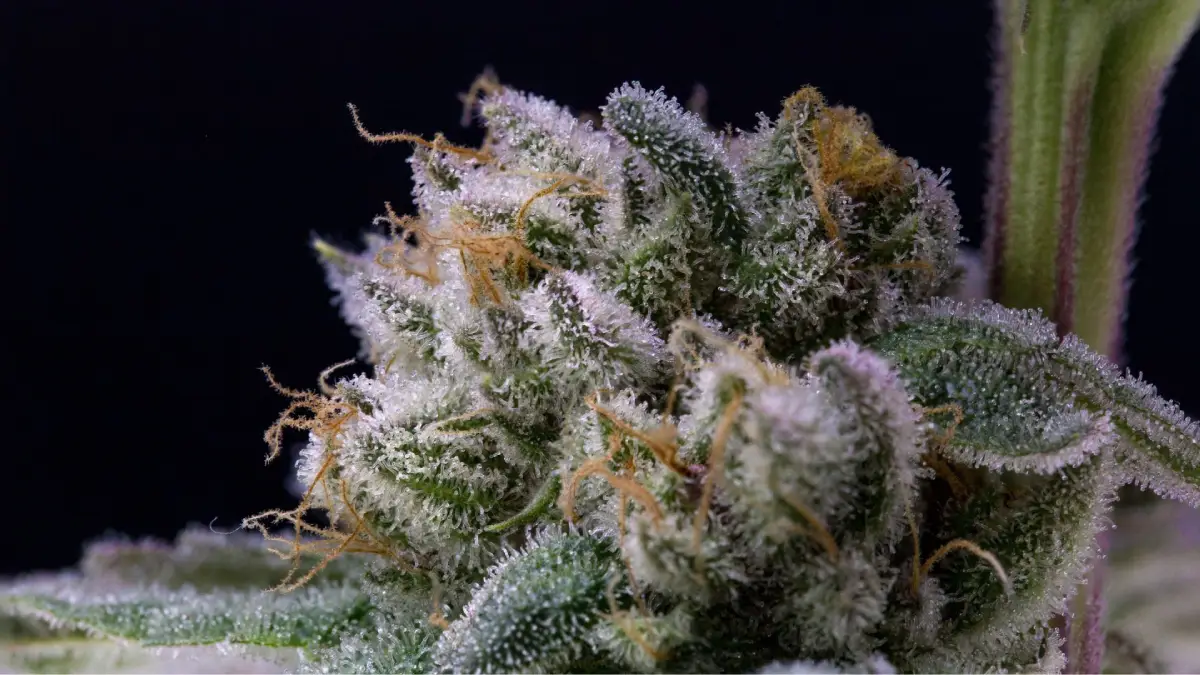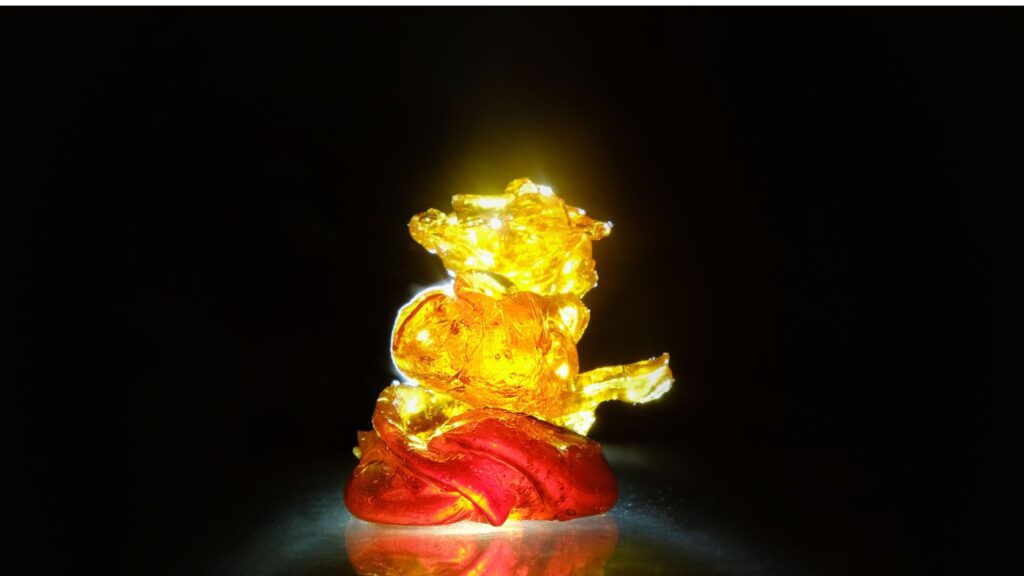Table of Contents
Key Points
- Hash, or hashish, is a type of concentrated cannabis. Hash is known to contain a higher level of THC, the psychoactive compound.
- The long-term use of hashish has been linked to memory loss, anxiety, depression, and other psychological issues.
- Four common types of hash are hand-pressed Hash, bubble hash, charas, and kief.
- There is help for those who are addicted to using hashish.
Hash, also known as hashish, is a concentrated form of cannabis that has been used for centuries in various cultures for medicinal and recreational purposes. Despite its widespread use, however, there is still much confusion and misinformation surrounding this substance, how it’s made, and what effects it has on the body when consumed in small and large doses.
How Is Hash Different Than Weed?
When it comes to cannabis, there are different products and terms in the market that can be confusing to many. Two of these terms are “hash” and “weed.” While these products share similarities, they are also distinctly different from each other.
Hash, or hashish, is a concentrated form of cannabis[1] that is made by sifting the resin glands, also known as trichomes, from the buds and leaves of the plant. This substance is then collected, pressed, and heated to create an especially potent version of cannabis. It is commonly consumed by smoking but can also be used in edibles or vaporizers.
Weed, another term for “marijuana,” refers to the dried and cured flowers of the cannabis plant. These flowers can be used in a variety of ways, from smoking to vaping to cooking. Weed is not as concentrated as hash, and its potency can vary significantly depending on the strain.
One of the main differences between hash and weed is the level of THC, also known as delta-9-tetrahydrocannabinol, that it typically contains. THC is the main psychoactive compound in cannabis that produces the associated “high” feeling.
Hash is usually much higher in THC than weed and can have concentrations up to 60%. This means that it typically produces a stronger, more intense effect than weed when consumed.
Another notable difference is the texture and appearance of the two products. Weed typically has a fluffy, green appearance, while hash is a solid block that is often brown or black in color.
In terms of flavor and aroma, hash has a more intense and concentrated taste than weed. It also tends to have a stronger aroma, which can make it more challenging to smoke in certain environments.
While both hash and weed may have similar effects on the body and mind, they are definitely different marijuana products.
How is Hash Made?
Hash is made by separating the trichomes from the cannabis plant, then pressing and heating them to create a concentrated form of marijuana. This process can be done manually or with machinery.
The most common method is called dry sifting, which involves shaking and sifting buds over a series of screens to separate the trichomes from the plant material. This process is labor intensive and can take up to several hours.
Another method of making hash is by using a process called ice-water extraction, which involves soaking the buds in cold water and then filtering out the trichomes that are collected on the surface. This method yields higher quality and more potent hash than dry sifting and is faster, but it requires specialized machinery.
Once the trichomes are collected, they can be pressed into blocks or “cakes” using either a manual press or an automated machine. This step gives hash its solid form and makes it easier to store and transport.
Different Forms of Hash
Hash can come in a variety of forms, from hand-pressed blocks to loose, granular powder. Different methods of extraction and pressing can also yield different results in terms of texture and consistency.
Below are a few of the most popular forms of hash:
- Hand-pressed Hash: This type of hash is made using a manual press and has a solid, pressed texture. It can be brown or black in color and often comes in blocks
- Bubble Hash: This type of hash is made using an ice-water extraction method and is often brown or yellow in color. It has a soft, crumbly texture and consists of small granules that resemble tiny rocks or pebbles.
- Charas: This type of hash is made using a hand-rolling method and is typically dark brown to black in color. It has an oily consistency and can be either sticky or hard.
- Kief: This type of hash is made by filtering the trichomes from cannabis flowers and has a fine, powdery consistency. It is usually light yellow to tan in color and is produced in large quantities.
How is Hash Consumed?
Hash can be consumed in many ways, including smoking or vaporizing. It can also be added to food and beverages for an extra kick of potency. Smoking hash is generally considered the most effective way to get the desired effects, as it allows for rapid absorption into the bloodstream.
In addition to traditional consumption methods of cannabis use, some people also use hash oil, which is made by extracting cannabinoids from the trichomes. Hash oil can be used to make edibles, tinctures, and other cannabis products.
Medical Applications of Hash
Hash is often used for its medical benefits, as many believe it provides more potent effects than marijuana alone. Its powerful cannabinoid content can help to reduce inflammation, pain, and nausea, as well as provide relief from anxiety, depression, and panic attacks. It has also been shown to be effective in treating neurological disorders such as epilepsy and multiple sclerosis.
What Are The Potential Effects of Hashish Use?
Like marijuana, hashish can produce a range of physical and psychological effects when consumed. The short-term effects[2] of hash may include feelings of relaxation, euphoria, increased appetite, and an altered sense of time. It can also cause cognitive impairment and loss of coordination.
The long-term use of hashish has been linked to memory loss, anxiety, depression, and other psychological issues. Additionally, smoking or vaporizing hash can increase the risk of respiratory problems such as bronchitis or emphysema. It is important to note that these effects may vary depending on the strength and purity of the product.
The use of hashish should always be done in moderation and with caution. If you are considering using hash for either medical or recreational use, it is important to talk to your doctor or a healthcare professional beforehand about any long-term effects it can have on you.
Hash FAQs
Below are some of the most frequently asked questions regarding hash weed.
Hash, or hashish, is a form of cannabis concentrate that is made by extracting the sticky resin from the plant’s trichomes. Trichomes are small, crystal-like structures that are found on the surface of the cannabis plant, and they contain the active compounds of the plant, including THC, CBD[3], and other cannabinoids. The resin from the trichomes is then collected and processed into a solid or paste-like substance.
Hashish is generally more potent than regular cannabis because it contains a higher concentration of THC. The strength of hashish depends on the strain of cannabis used to make it and the method of extraction employed.
For example, dry-sieve hashish typically contains around 40-60% THC, while ice-water hashish can contain up to 80% THC. Due to its high potency, hashish is usually consumed in smaller quantities than regular cannabis.
The legal status of hashish varies depending on the country or state in which you reside. In some countries, such as the Netherlands, hashish is legally sold in coffee shops and is decriminalized for personal use.
In other countries, hashish is illegal and classified as a Schedule I drug, which means that it is not recognized for its therapeutic potential and is considered to have a high potential for abuse. In the United States, its legality as a recreational drug versus strictly medicinal will vary depending on the location.
Hashish produces effects that are similar to those of regular cannabis but usually more impactful due to the higher concentration levels of THC. Some of the effects that individuals may experience after consuming hashish include feelings of euphoria, relaxation, altered sensory perception, and increased appetite.
However, the effects of hashish usage can vary from person to person and depend on factors such as the individual’s tolerance level, the potency of the hashish, and the method of consumption.
Like any form of cannabis, hash use has potential risks and side effects, particularly when it is consumed in large quantities or over prolonged periods. Some of the potential risks associated with using hashish include impaired motor function, increased blood pressure and heart rate, impaired memory and cognition, anxiety, paranoia, and an increased risk of developing symptoms of psychosis.
Also, since hashish is often manufactured in unregulated or illegal settings, there is a risk of contamination with harmful chemicals, pesticides, or bacteria. It is essential to be mindful of the potential risks and side effects before consuming hash or any form of cannabis.
[1] Lafaye, G., Karila, L., Blecha, L., & Benyamina, A. (2017, September). Cannabis, cannabinoids, and health. Dialogues in clinical neuroscience. Retrieved April 25, 2023, from https://www.ncbi.nlm.nih.gov/pmc/articles/PMC5741114/
[2] Volkow, N. D., Baler, R. D., Compton, W. M., & Weiss, S. R. B. (2014, June 5). Adverse health effects of marijuana use. The New England journal of medicine. Retrieved April 25, 2023, from https://www.ncbi.nlm.nih.gov/pmc/articles/PMC4827335/
[3] Peter Grinspoon, M. D. (2021, September 24). Cannabidiol (CBD): What we know and what we don’t. Harvard Health. Retrieved April 25, 2023, from https://www.health.harvard.edu/blog/cannabidiol-cbd-what-we-know-and-what-we-dont-2018082414476


















